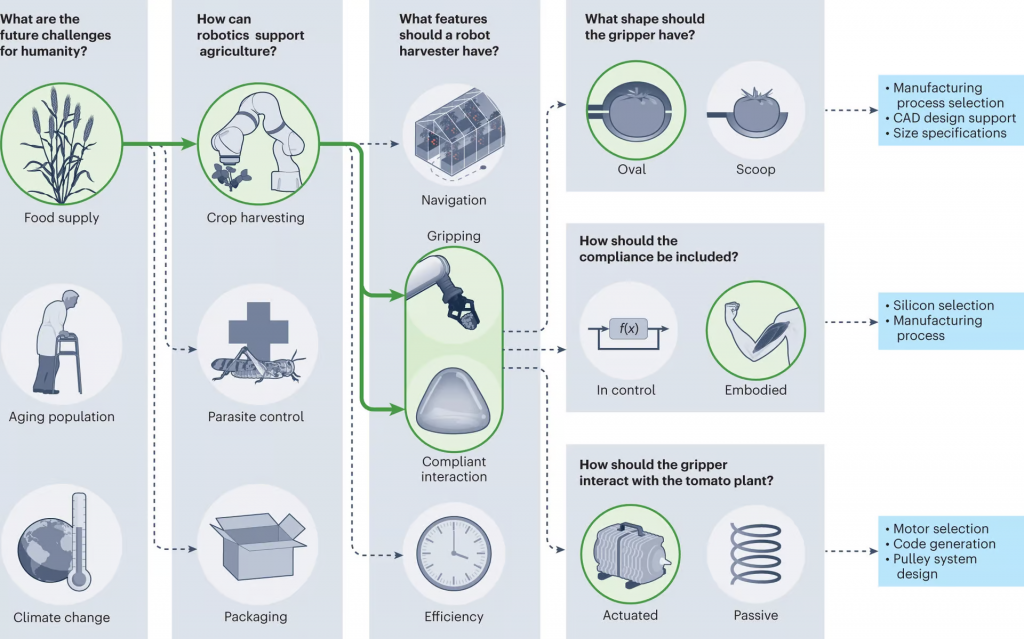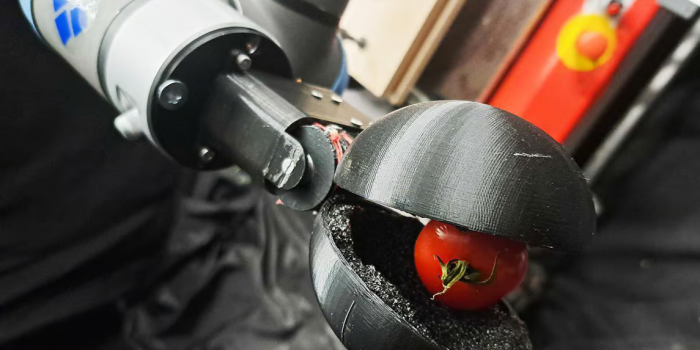In an interesting collaboration, researchers have employed a large language model (LLM), specifically ChatGPT-3, to assist in the design and construction of a robot capable of picking tomatoes.
LLMs have the ability to process and comprehend vast amounts of text data, making them useful for answering questions and providing insights. This case study, conducted by researchers from Delft University of Technology and the Swiss Federal Institute of Technology (EPFL), explores the innovative use of ChatGPT-3 in the physical design of a robot, despite its primary function as a language model.
The researchers began by querying ChatGPT-3 about future challenges for humanity, and the model identified three key areas: food supply, an aging population, and climate change. Given their lack of expertise in the field of food supply, the researchers decided to focus on robot design for harvesting. Leveraging the LLM’s access to a wealth of global data from academic publications, technical manuals, books, and media, they sought advice on the features a robot harvester should possess. ChatGPT-3 suggested a motor-driven gripper for effectively plucking ripe tomatoes from the vines.

Once the general design concept was established, the researchers proceeded to refine the specifics, such as selecting appropriate construction materials and creating the necessary computer code to control the robot. While LLMs cannot generate complete computer-assisted design (CAD) models or evaluate code, the researchers assumed a more hands-on role as technicians, collaborating with ChatGPT-3 to optimize the code, finalize the CAD, and fabricate the robot.
Following the technical recommendations provided by ChatGPT-3, the researchers successfully built a robot gripper and tested it in real-world conditions, accomplishing the task of picking tomatoes. This case study highlights the potential for transforming the design process through human-LLM collaboration. The researchers acknowledge that different degrees of collaboration are possible, ranging from AI acting as the sole “inventor” to using AI as a supplement to human expertise.

However, ethical and practical concerns arise from this collaboration. Issues of bias, plagiarism, and intellectual property rights need to be carefully considered, as LLM-generated designs may rely on existing knowledge rather than true novelty. The researchers caution against decisions made solely based on AI recommendations, emphasizing the importance of human expertise. They stress the need for responsible management of human-AI collaborations within the robotics community to ensure ethical, sustainable, and socially beneficial advancements.

Ultimately, the researchers express optimism about the potential of LLMs in opening up exciting possibilities for collaboration. With appropriate management, they believe that LLMs can be a force for good, driving the progress of robots in an ethical and empowering manner.
The case study was published in the journal Nature Machine Intelligence.
Source: EPFL


